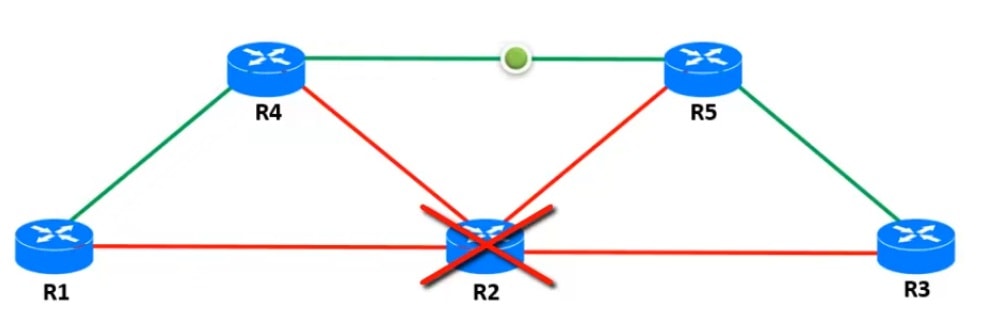As we know that the routing is a process of creating a route for the data packets and It occurs in the network layer of the OSI Model. There are two types of routing: Static Routing and Dynamic Routing. Where static routing does not use any routing protocol, on the other hand, the dynamic routing uses the routing protocol such as rip, igrp, eigrp, ospf, is-is, etc. Here in this post, we are going to learn the differences between static routing and dynamic routing and what are the advantages and disadvantages of static and dynamic routing.
What is static routing?
Static Route is the route that the network administrator manually enters into the routing table. It is a one-way communication and here we do not use any routing protocol.
How static routing works:
Let’s take an example, there are 5 routers connected to each other and you want to send data from router 1 to router 3 and the default route you have created in such a way that. Router 1 will forward the data to router 2 and the router 2 will forward this information to the router 3.

Just imagine a situation, due to some reason if the router 2 fails, the router 1 cannot decide the alternate route for the data packets. In this scenario, the network administrator has to manually configure the alternate route. So that, the data will reach to the correct destination.

Advantages of Static Routing:
- The route is permanent.
- It is more secure than dynamic routing.
- Best suitable for a small network.
Disadvantages of Static Routing:
- Not suitable for a large network.
- If the link gets fail, it will affect the entire network.
- The Router cannot decide the alternate route for the data packets.
What is Dynamic Routing?
The Dynamic Routing uses the routing protocol for creating a route for the data packets. Here, the router automatically collects and store dynamic route in the routing table.
How Dynamic Routing works:
Let’s take an example, there are 5 routers connected to each other. Here, the administrator is not going to create the route for the data packets. Instead of this, the administrator will assign a routing protocol to this router and this routing protocol will automatically decide the best route for the data packets.

In this scenario, if any of this router or link get fails, the routing protocol is so smart that it can automatically choose the alternate route for the data packets immediately and like this it minimizes the work pressure of the network administrator and the users need to wait for the long time for the link to go up.

Advantages of Dynamic Routing:
- Best suitable for large networks.
- If the link or the router get fails, it is not going to affect the entire network.
- Routing protocols are smart to choose an alternate route for the data packets if any of the links get fails.
- Here, the user needs not to wait for a long time if the link gets fails. Because the routing protocol immediately chooses an alternate route.
Disadvantages of Dynamic Routing:
- It is less secure as compared to static routing.
- The route is not permanent here, it keeps changes. So, the network administrator has to check regularly from where the traffic flows.
Note: Every router has a routing table based on which the data packets are forwarded to the destination.
Difference between Static Routing and Dynamic Routing
|
STATIC ROUTING |
DYNAMIC ROUTING |
| It does not use a routing protocol. | It uses a routing protocol. |
| The administrator enters the route in the routing table manually. | Routing protocol decides the route for the data packets and makes an entry to the routing table automatically. |
| Suitable for a small network. | Suitable for a large network. |
| Link failure affects the network. | Link failure does not affect the network. |
| Security is high. | Security is less. |
| The route is permanent. | The route keeps changes according to the changes in the network. |
So, this is the difference between Static and Dynamic Routing. I Hope, the concept is clear. Here, is a short video on how this routing protocol works.


